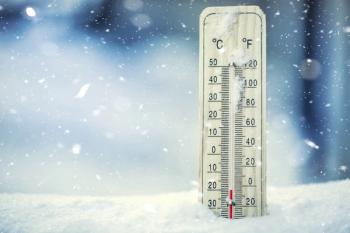
'Hidden Poor' Face More Physical and Mental Health Problems Than the Poor
The older generation may have income above the official poverty line, but while they may not be legally termed “poor,” they still might not have enough financial means required to maintain a decent quality of life in California.
The older generation may have income above the official poverty line, but while they may not be legally termed “poor,” they still might not have enough financial means required to maintain a decent quality of life.
These “hidden poor” people are almost twice as likely to say they are in poor or fair health, feel depressed, and be unable to get timely healthcare compared with their wealthier counterparts,
Many in California are known to have incomes just above the federal poverty level (FPL) but the financial resources still do not meet the basic standard of living as determined by the Elder Economic Security Standard TM Index. Also known as the Elder Index, the indicator is a measure of poverty that takes into account the true cost of living in all 58 California counties.
These seniors, who can also be called the “hidden poor,” encounter more health problems and less accessibility to good care because of 2 reasons. Firstly, they do not get access to care because they do not have the means like those with higher income. And secondly, because they do not fall under the FPL, they do not get access to public programs that provide assistance to the poor population.
It is imperative that policy makers pay more attention to this hidden poor population.
The Magnitude of the Problem
If a single person has an income of less than $11,770, then he falls below the FPL. The number of seniors qualifying for the “hidden poor” level is staggering. In California, there are 655,000 seniors living in the “hidden poor” level, as compared to 259,000 living below the FPL.
“There are far more ‘under-the-radar’ poor than ‘officially’ poor people in California and throughout the nation,” said Steven Wallace, lead author of the fact sheet and associate director of the center.
This vulnerable section of the society often doesn’t qualify for assisting services that would help ease financial burdens such as healthcare expenses.
“They have financial troubles and health issues that may be related to their economic situation, but outdated poverty measurements keep them in the blind spot of planners and policymakers,” Wallace explained.
The Need to Pay More Attention
Nearly 47% of seniors living below the FPL admitted to living in poor health. But the more striking reality is that 34% of the hidden poor too admitted to living in deprived conditions as compared with 17.5% of those with incomes above the Elder Index.
The prevalence of depression is felt among 10.6% of the hidden poor population as compared to 3.4% of those above the Elder Index. And almost twice as many had difficulty obtaining timely medical assistance—22.2% compared with 11.9%.
Latino, African American, and Asian American older adults who live alone or only with a spouse or partner have the highest rates of being among the hidden poor, at 35.4%, 30.6% and 29.2%, respectively.
“It is time for state and federal policymakers to address the needs of this vulnerable group and have programs that help them obtain basic necessities,” Wallace said.
Newsletter
Stay ahead of policy, cost, and value—subscribe to AJMC for expert insights at the intersection of clinical care and health economics.







































